“Shops are typically run by conservative, not that young — and dare I say male — shop owners in the industry. That would be the profile who just thought I was mad. So I wouldn’t have persuaded them to buy anything from me.”
— Isla Rowntree on why she decided to sell customer-direct
You’ve probably seen them: Young kids zipping around on great-looking (usually red) bikes with the Islabikes name on the downtube. Isla Rowntree is the woman behind this business. She founded the company in 2005 in the picturesque town of Ludlow in the United Kingdom, about 155 miles northwest of London. In 2013 Islabikes came the North America and planted their headquarters in Portland’s Hosford-Abernethy neighborhood.
Last summer Rowntree paid a visit to her bustling U.S. outpost and I met up with her for a chat. We sat in the upper floor of their warehouse and showroom on SE 7th Avenue and she shared a brief history of children’s bikes, her passion for making good ones, the challenges she faced as a start-up, and how Islabikes almost never ended up in Portland.
The Q & A is below, edited slightly for clarity (for full effect, read her words in a proper British accent)…
I was intrigued to learn you started a children’s bike company, but that children weren’t your inspiration?
“No. It wasn’t through my own children. I’ve been in the bike industry pretty much all my working life. I started in a bike shop when I was still in school and experienced my own personal challenges with fit and ergonimics because I’m fairly physically small. I came up with some solutions for those challenges and tinkered about with them all throughout my twenties. Then, 11 or 12 years ago, I got to an age when my friends — and my sister in particular — had started families. They were all asking me what bikes to get for their kids. And that really drew my attention to the details of children’s bikes as they were available at the time. I was expecting to make a recommendation, do a bit of research and say, “OK get this one for your child.” But they were all so awful.
What made them so bad?
The bicycles available for children in the early 2000s were worse than they are now and probably the worst point in the history of children’s bikes. If you look at older bikes they were O.K., for their time. They were well thought-out transport bikes. The fit was quite good. In the early 2000s when I was looking, they were so heavy. 14-16 kilos (30-35 lbs) for a bike for a five or six year-old, which is unbelievably heavy. And that was because they were covered in tat. Things like tassles, non-functional bits, and quite often licensing deals. So it might be a Barbie bike or a Bob The Builder bike or whatever. The manufacturer would be paying for that licensing deal so would have actually less money to spend on the bicycle itself. So all this stuff would be covering a really terrible bike underneath.
But I think the point at which children’s bikes went backwards and became particularly awful was through the mountain-biking boom in the early 1990s. That’s when the industry went into oversized tubing, initially in steel and then we went into aluminum. And the tubes got much bigger. But then they wanted kids bikes to look like adult bikes, so they made them with oversized steel to give it the big, chunky look. And it was stong enought for a 300-pound adult to ride and you’ve got a 50-pound kid on there. It was just ridiculous. And they would put full-suspension forks on with no movement in them. That’s another 3-4 pounds doing absolutely nothing. And then they put triple-chainsets on them — all out of steel. And almost every child you’d see riding would be on the small sprocket at the back and the small chainring on the front where they’d got stuck and they’d be there forever. Forever on one gear. And they can’t shift because the shifters don’t work.
So the weight was horrendous for no functional benefit. And then you’ve got the ergnomics, which were just dreadful. There was no thought given to how this thing would fit. They were designed to move off the shop floor. “How can we get this thing off the floor and get the money off the customer.” There was not thought to what would happen thereafer. There was no consideration given to the experience the child was going to have on the bike. The shape was awful. The cranks were way too long, the bottom brackets were too high. The relationship between the top-tube length and the reach was like — I was going to say guesswork, but that would imply they actually thought about it.
And then things like the actual functioning parts: The brakes were really a big deal. Back then most of the brakes were out-of-reach for my small hands. And if I had been able to reach them, I wouldn’t have the strength to actually pull them properly, so you’re putting a child on a safety-critical product with brakes they can’t actually use.
Things like brake reach, crank length, and all the tiny details that really make a difference. I felt I could extrapolate that learning down to something really small. I knew what the challenges were. In a way that maybe, and I don’t think anybody set out to design an awful bike, but their minds just weren’t in the place of the user. To know what it feels like to ride a bike where you can’t reach the brakes. You don’t have any confidence to go fast because you don’t think you can stop. It’s a really big deal. I’m a super-confident rider, but you put me on a bike where I can’t reach the brakes and my confidence just goes like that [gestures downward]. So what’s it like when you’re four years old and you’re still learning?
Here’s where my head was with all this… My sister has four children, she bred me this perfect test team. And because I love bikes, like you, you want other people to love them too. You’re an evangelist about it and you want to share it. And I thought about my nieces and nephews and realized: This could put them off of cycling because these are so awful and they’ll have such a bad experience they might not actually want to ride. That was really the spark for me. And I felt straight away, looking at one of these sad bicyles, I knew how to solve all those problems — because I had solved a lot of them for myself.”
How did you create a bike company from this?
“I was already in the cycling industry. So I already had contacts and connections in southeast Asia. So I just set about. I handed in my notice at the place where I was working and gave myself a six-month timeframe to start trading [doing business] — not a long time to develeop a full bike range. I had a 5-6 page handwritten business plan and set about doing it.”
Did you get a good response from the market?
“Yes. From the actual customers. The reaction from the industry was, “Nobody will pay that much for a kids bike.” That’s quite interesting in and of itself. The best children’s bike for a four-year-old on the market at that time cost £50 [$70 dollars] and ours cost £100 [$97]. So we were doubling what people who want a half-decent bike would typically pay at that time. It was a big step. That bicycle now, that Cnoc 16, it’s the same bike but it’s way better now. It’s £280 [$420]. So it’s now over five times what the next price in the marketplace was just over 10 years ago. So we’ve completely changed the perception of what’s acceptable to pay for a kids bike.”
Right. But that many people can’t afford a bike at that cost.
“Bicycles have become so cheap. They need to be accessible, but you need to make something to a standard that is actually going to keep working and be functional. You get to a point where you try to make something cheaper and you get to a point where it’s not worth making anymore. There wasn’t an appetite in the industry for doing more expensive children’s bikes. Althought I didn’t think of them as more expensive, I just thought of them as being better. So I didn’t come up with a price point and then design a bike. I designed a bike and then worked out what we had to sell it for to have a viable business. And you have to have a viable business in order to keep providing the thing you want — to give the kids a better experience.
And you have to always have an eye on the commercial with any business. If you get it wrong commercially, it fails. We’re in a capitalist world. If you get it wrong and it disappears. And if your reason for existing is purpose-driven, like ours is, it ends at that point.”
It’s interesting to me that you had that response to higher-priced kids bikes from retailers who have no problem selling very expensives bicycles to adults.
“Our bicycles — in the overall spectrum compared with adults — are actually priced right at the bottom.”
So it’s about respecting children as users of bicycles?
“Yes. Aboslutely.”
And your product line and business continued to grow?
“Yes. At first it was just me. Tim [Goodall, who runs the U.S. operation in Portland] was my first colleague. He’s our managing director now. We have about 35 people in the U.K.”
Your business model is different. You sell direct and by appointment, not through dealers. How did that come about?
“There was a lot of negativity in the traditional bicycle industry about that as a model. I think things are changing now. We used to be associated with old-fashioned mail order with zero customer service and we’re absolutely not about that. There were two inital reasons for doing it. The main reason is that we control the quality of the bikes, which is delivered in the preparation. You have to get all the details right to get a four-year-old hand to stop the bike.”
What are those details?
“Things like, very short-reach brake levers. Not adult brake levers with the stop screwed in. I mean really tiny ones that we design ourselves. Small diamater handlebars, much slimmer grips that move the hand closer, and you have to have the right length crankarm. And this is the key — your brake cable. You mustn’t have any burring at either end of the cable where it’s cut because it will add drag to the system and the child’s hand won’t be strong enough to overcome the drag. And the point of contact of the pads on the rim and the position of the lever needs to be in the strongest part of the child’s hand. There’s also the position of the brake lever when the pads touch the rim; you have to get all that right for the bike to perform as I’ve designed it. Through doing the bicycle preparation ourselves and handing it directly to the customer, we control all of those details.
There are loads of great IBDs [independent bicycle dealers] out there that do a good job of preparing bikes; but some don’t. And even the good ones don’t neccessarily understand those tiny details that apply to a child’s bike. So our prefernce is to control that. Because it’s not just about the bicycle desgin, it’s about the bicycle preparartion.
I’d started a business where everybody else in the industry thought I was mad because the bikes were twice as much as the next available product in the marketplace. If I was going to distribute through IBDs at that point in time I would have had to have gone around to them all and convinced all these IBDs to buy my bicycle line from me. The bikes cost twice as much. Shops are typically run by conservative, not that young — and dare I say male — shop owners in the industry. That would be the profile who just thought I was mad. So I wouldn’t have persuaded them to buy anything from me. A few might have done it and they might have stuck them in a dustry corner of their shop. If they had bought them and managed to sell them, I’d get paid for the bikes three months later. So the business would have never started.
I believed the market was there, but I had to find a way around how things were usually done in order to get to them. So I just went directly. Given the position I was in. I don’t think I had a choice.”
You were able to gain a strong following in the UK and now you’re here in the U.S. Have you noticed differences in the two markets?
“It’s very different. The U.S. is huge. It’s just very big. Geographically it’s enormous. The U.K. is quite small and much more densely populated. Travel distances are smaller so the community within the cycling fraternity is much easier. The readiness to accept our direct business model is perhaps a little slower here compared to our experience in Europe.”
And what about the Portland part of your experience? Has that been a good decision?
“The Portland part is really a big part for us as a business. A business is a group of people with a set of values and its own culture. When we were planning our move here, we did a farily dry exercise with a map of the U.S. and worked out where we might be located. You’ve got your populations on each coast and we wokred out that the optimal place to be located in terms of physically distributing our product was probably California. And that’s where we planned to locate ourselves initially.”
We did a scouting trip to the Bay Area. It was great; but it didn’t feel right. That’s where it comes down to being a group of people with a culture and values. It’s really hard to articulate, but it was lovely and a wonderful experience to visit. It was great fun; but it just didn’t feel like us. I went back and told Tim, “I just don’t think you’ll be happy being there. It’s not going to work.” His uncle had been saying, “Tim you’ve gotta get to Portland!” so we booked a flight here and within a day of getting off the plane we just said, this feels like home.”
Follow Isla on Twitter at @IslaRowntree and see how she’s working to create bikes that last forever via the Imagine Project on Instagram.
— Jonathan Maus: (503) 706-8804, @jonathan_maus on Twitter and jonathan@bikeportland.org
Never miss a story. Sign-up for the daily BP Headlines email.
BikePortland needs your support.
The post “Everybody in the industry thought I was mad”: An interview with Islabikes founder Isla Rowntree appeared first on BikePortland.org.
from Latest headlines from BikePortland http://ift.tt/2Ga0yhx
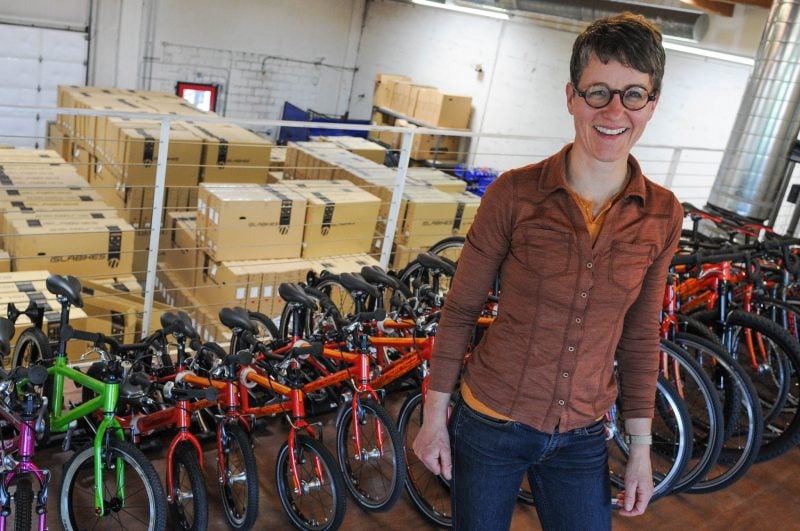
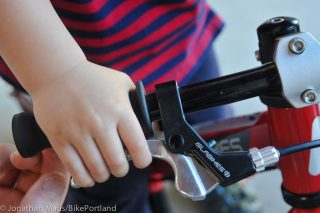
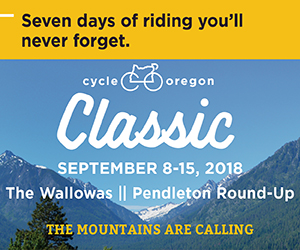
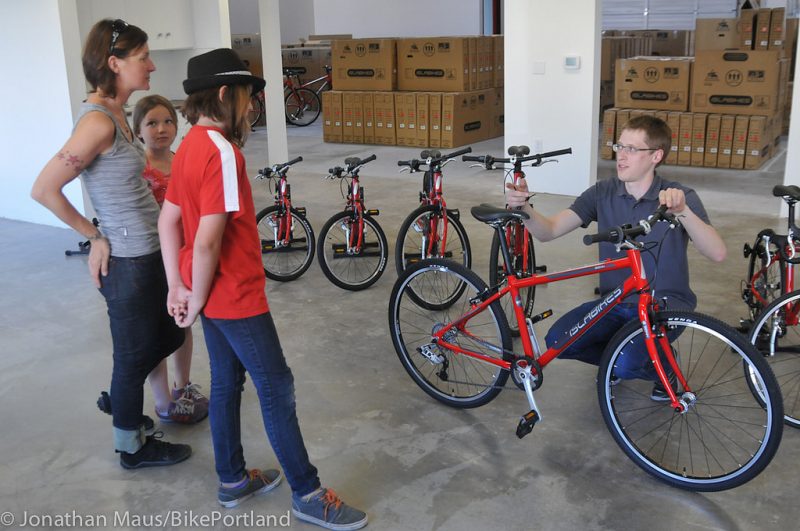
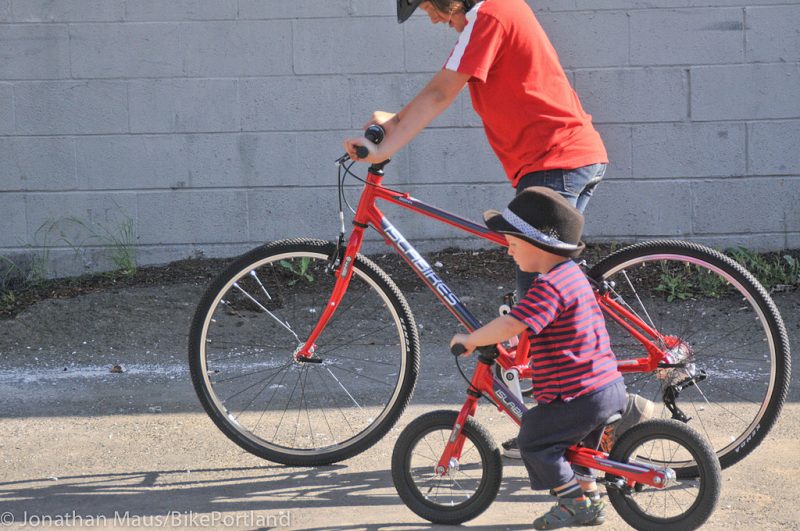
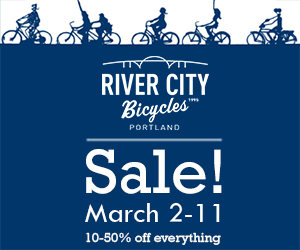
No comments:
Post a Comment